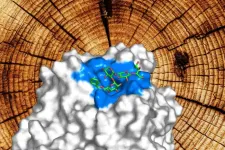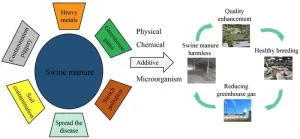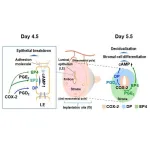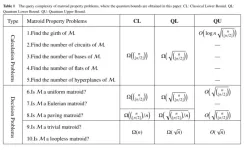(Press-News.org) Researchers want to transform the natural and abundant resource wood into useful materials, and central to that is a molecular machine found in fungi that decomposes the complex raw material into its basic components. A Kobe University researcher and his team now were the first to come up with a test feed for the fungal molecular machine that allows them to observe its close-to-natural action, opening the door to improving it and to putting it to industrial application.
Biochemical engineers want to transform the abundant and renewable material wood into bioplastics, medically relevant chemicals, food additives or fuel. However, the complex structure of wood has been a major hurdle for this. The Kobe University bioengineer KOH Sangho explains, “Wood is composed of different, chemically linked materials such as lignin and hemicellulose that first need to be separated to become available as source materials.” In other words, the wood needs shucking. Fungi have enzymes, tiny chemical machines, capable of doing that, but to improve and adapt them for industrial use, we need to understand how they work, and researchers did not have a suitable feed, or “substrate,” for the enzyme to study its function. “As a graduate student at Shinshu University, I failed to produce the typical enzymatic reaction dynamics graph we know from the textbooks using the commonly used test substrate. I even reached out to the researcher who first found the enzyme to ask what I was doing wrong, but he replied that I wasn’t doing anything wrong and that my results were typical of attempts to characterize this enzyme,” Koh recounts.
Motivated by this, the fledgling bioengineer and his team created a new material that retains the key structural features of the enzyme’s natural substrate while still being simple enough to allow chemical modification and computational simulation. “The key to our ability to create a suitable substrate was that we had previously found another enzyme that allowed us to create very specific hemicellulose fragments that could not be produced in any other way. Only with these fragments we could chemically synthesize a suitable test substrate,” says Koh about why nobody else has been able to characterize the enzyme.
The bioengineers now published their results in the journal Biochemical and Biophysical Research Communications. Being the first team able to observe the isolated enzyme’s action in a near-natural setting, they were the first to ascertain its reaction speed and affinity, essential parameters for bioengineers working on any enzyme. Koh says: “When, as a result of using the substrate I designed, the textbook-like reaction dynamics emerged, I was really happy. With this we can finally characterize the enzyme’s ‘true’ nature, and improve and apply it industrially, too.”
Their computational simulations showed what made the difference between previous attempts and their approach: So far, researchers had focused only on the specific location within the substrate where it should be cleaved and thus the test substrate they used basically only consisted of the connecting structure. However, Koh’s newly synthesized substrate retains a short hemicellulose tail attached to the reaction site, and it turned out that it is this tail that the enzyme binds to when performing its role.
Now that the researchers are in possession of clear performance parameters and the reaction mechanism of the enzyme, they want to search for better alternatives in different fungi, and try to chemically modify the molecule to see how that affects its performance. In addition, the researchers think that their test substrate will also play a role in studying how this enzyme works together with others to separate the different components of wood. Koh concludes, “We think this was a significant step towards the process’s industrial application to the generation of useful chemicals from the abundant natural resource.”
This research was funded by the Japan Society for the Promotion of Science (grants 23K13870 and 17K07874) and the Sugiyama Sangyou Kagaku Research Foundation. It was conducted at Shinshu University in a collaboration of researchers from the National Institute of Advanced Industrial Science and Technology, Kobe University and Shinshu University.
Kobe University is a national university with roots dating back to the Kobe Commercial School founded in 1902. It is now one of Japan’s leading comprehensive research universities with nearly 16,000 students and nearly 1,700 faculty in 10 faculties and schools and 15 graduate schools. Combining the social and natural sciences to cultivate leaders with an interdisciplinary perspective, Kobe University creates knowledge and fosters innovation to address society’s challenges.
END
Measuring how much wood a wood shuck shucks with all-new wood shuck food
First speed measurement of wood-separating enzyme for development of biochemicals
2024-09-18
ELSE PRESS RELEASES FROM THIS DATE:
AACR Cancer Progress Report highlights innovative research, novel treatments, and powerful patient stories
2024-09-18
PHILADELPHIA – Today, the American Association for Cancer Research (AACR) released the 14th edition of its annual Cancer Progress Report. This comprehensive report provides the latest statistics on cancer incidence, mortality, and survivorship. It also outlines how basic, translational, and clinical cancer research and cancer-related population sciences—largely supported by federal investments in the National Institutes of Health (NIH), the National Cancer Institute (NCI), the U.S. Food and Drug Administration (FDA), and the Centers for Disease ...
How do exogenous additives affect the direction of heavy metals and the preservation of nitrogen in pig manure compost?
2024-09-18
Most of the heavy metals in pig manure originate from feed additives, such as copper and zinc. When these heavy metals are introduced into agricultural soil, they can significantly increase the heavy metal content in crops, posing a threat to both the environment and human health. While pig manure is rich in nitrogen, an essential nutrient for crop growth, a substantial amount of nitrogen is lost in gaseous form during the composting process, impacting the quality of the compost. Moreover, this process results in the emission of ...
Breakthrough in fertility treatment: Prostaglandin receptors found to promote embryo implantation
2024-09-18
A team from Kumamoto University has uncovered a new mechanism that could revolutionize infertility care by promoting embryo implantation. The discovery focuses on prostaglandin (PG) receptors in the uterus that enhance the critical process of decidualization, which is necessary for a successful pregnancy. This finding opens the door to developing new fertility treatments that target these receptors.
Prostaglandins are bioactive lipids known for their role in body’s response to injury by causing fever and pain, but they are also crucial in reproductive ...
What numbers do you see? A new bistable perceptual phenomenon on symbolic numbers
2024-09-18
Perceptual recognition of numerical characters, like Arabic numerals, is indispensable for our daily activities in the modern society. Studying the perceptual and neural mechanisms that endow us with the ability to understand those characters is an important scientific topic. In this project, researchers explored a bistable perceptual phenomenon of a specially designed character named occluded digital numeral, to get a deeper understanding of the mechanisms underpinning the perceptual recognition of numbers.
The digital numeral is a special version of number fonts designed for application in electronic products ...
Quantum speedup and limitations on matroid property problems
2024-09-18
Quantum computers show advantages over classical computers in some problems, such as unordered data base searching and prime factorization. Finding more problems that can take quantum speedup has become one of the focus problems in quantum computing. Before this, there is no research work on the quantum query complexity and quantum algorithm for matroid problems. It is interesting and meaningful to search for structures that can take quantum advantage in matroid problems.
In order to study the possibility and limitation of acceleration of quantum computing in matroid problems, a ...
Unravelling an ancient European extinction mystery: Disappearance of dwarf megafauna on palaeolithic Cyprus
2024-09-18
Scientists have unravelled a mystery about the disappearance of dwarf hippos and elephants that once roamed the picturesque landscape on the Mediterranean island of Cyprus before palaeolithic humans arrived.
Cyprus only had two species of megafauna present during the Late Pleistocene — the 500-kg dwarf elephant (Palaeoloxodon cypriotes), and the 130-kg dwarf hippo (Phanourios minor), but both species disappeared soon after humans arrived around 14,000 years ago.
In examining the reasons behind the extinction of these prehistoric animals, research funded by the European Regional Development Fund and the Republic of Cyprus through the Research and Innovation Foundation ...
Highly-sensitive beaks could help albatrosses and penguins find their food
2024-09-18
Researchers have discovered that seabirds, including penguins and albatrosses, have highly-sensitive regions in their beaks that could be used to help them find food. This is the first time this ability has been identified in seabirds.
An international team of researchers, led by the University of Cambridge, studied over 350 species of modern birds and found that seabirds have a high density of sensory receptors and nerves at the tip of their beaks, which has been previously identified in specialised tactile foragers such as ducks.
The researchers say this touch-sensitive region could have come from a common ancestor, and further work is needed to determine ...
Self-reporting of health may lead to underestimation of health inequalities in England
2024-09-17
UNDER STRICT EMBARGO UNTIL TUESDAY 17 SEPTEMBER 23:15 UK TIME (BST).
Self-reporting of health may lead to underestimation of health inequalities in England
Peer reviewed | Observational study | People
A first-of-its kind analysis of data collected from England’s annual health survey found that of the people who reported their health as ‘poor’, those living in areas of high deprivation are likely to have worse health than those living in the least deprived areas.
This could mean that we are ...
New research shows how oral cancer cells avoid immune system
2024-09-17
Macquarie University researchers have discovered new information about how oral cancer cells may block the body's immune response. This could lead to better treatments for this aggressive disease.
Their research, published in the Journal of Oral Biosciences this month, looked at protein interactions in oral cancer cells that might stop our immune cells from attacking these tumours.
Oral cancer is the sixth most common cancer in Australia and the most common in India. Advanced forms of oral cancer are hard to treat, with patients typically surviving less than 12 months.
Lead author Dr Rajdeep Chakraborty from Applied Biosciences ...
Abnormal electrolyte levels in people with eating disorders may increase risk of death, poor health outcomes
2024-09-17
Ottawa, ON, September 17, 2024 – A new study published in The Lancet Psychiatry found that 32% of individuals with an eating disorder had abnormal electrolyte levels, which were associated with a higher risk of death from any cause.
The study, led by researchers at ICES and The Ottawa Hospital, found that electrolyte abnormalities were also linked to the development of other serious health conditions, including chronic kidney disease, bone fracture, bowel obstruction, and acute kidney injury.
This is one of the first large, population-based studies to identify an important risk factor for mortality and poor health outcomes in individuals ...
LAST 30 PRESS RELEASES:
A JBNU–KIMS collaborative study on a cost-effective alloy matches superalloys for power plants and energy infrastructure
New study overturns long-held model of how plants coordinate immune responses.
New AI model predicts disease risk while you sleep
Scientists discover molecular ‘reshuffle’ and crack an 80-year-old conundrum
How stressors during pregnancy impact the developing fetal brain
Electrons lag behind the nucleus
From fungi to brain cells: one scientist's winding path reveals how epigenomics shapes neural destiny
Schizophrenia and osteoporosis share 195 genetic loci, highlighting unexpected biological bridges between brain and bone
Schizophrenia-linked genetic variant renders key brain receptor completely unresponsive to both natural and therapeutic compounds
Innovative review reveals overlooked complexity in cellular energy sensor's dual roles in Alzheimer's disease
Autism research reframed: Why heterogeneity is the data, not the noise
Brazil's genetic treasure trove: supercentenarians reveal secrets of extreme human longevity
The (metabolic) cost of life
CFRI special issue call for papers: New Frontiers in Sustainable Finance
HKU Engineering scholar demonstrates the smallest all-printed infrared photodetectors to date
Precision empowerment for brain "eavesdropping": CAS team develops triple-electrode integrated functional electrode for simultaneous monitoring of neural signals and chemical transmitters during sleep
Single-capillary endothelial dysfunction resolved by optoacoustic mesoscopy
HKU three research projects named among ‘Top 10 Innovation & Technology News in Hong Kong 2025’ showcasing excellence in research and technology transfer
NLRSeek: A reannotation-based pipeline for mining missing NLR genes in sequenced genomes
A strand and whole genome duplication–aware collinear gene identification tool
Light storage in light cages: A revolutionary approach to on-chip quantum memories
Point spread function decoupling in computational fluorescence microscopy
BacPhase: Long-insert paired-end sequencing for bin marker construction and genome phasing
GmWOX1 regulates the mediolateral polarity of compound leaves in soybean
ChargeFabrica: An open-source simulation tool that aims to accelerate search for high performance perovskite solar cells
High levels of ADAR overexpression induce abundant and stochastic off-target RNA editing in rice protoplasts
On-demand upgraded recycling of polyethylene and construction of sustainable multifunctional materials based on the "LEGO" strategy
New "Stomata in-sight" system allows scientists to watch plants breathe in real-time
Anorexia nervosa may result in long-term skeletal muscle impairment
Narrative-based performance reviews deemed fairest by employees
[Press-News.org] Measuring how much wood a wood shuck shucks with all-new wood shuck foodFirst speed measurement of wood-separating enzyme for development of biochemicals









